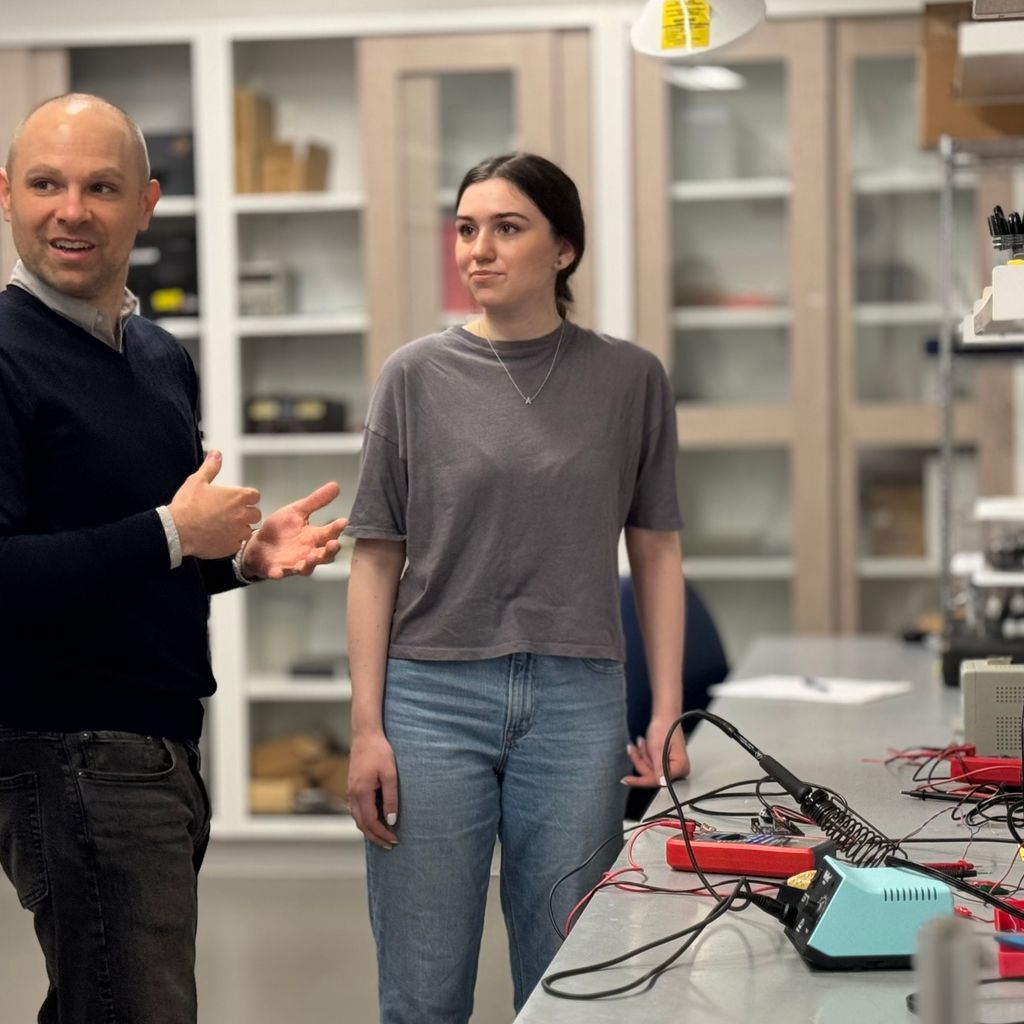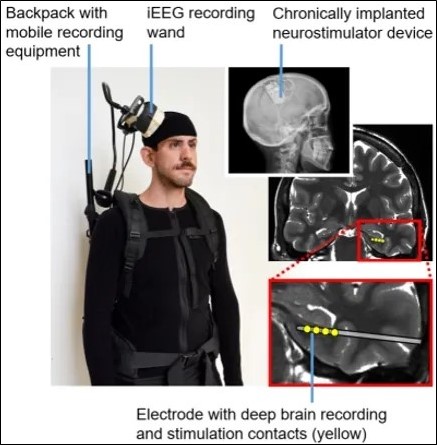Scientist Profile – Professor Matthias Stangl
Matthias Stangl Diversifies Techniques for Studying the Human Brain
Matthias Stangl, Ph.D. – Assistant Professor of Biomedical Engineering
The Stangl Lab studies the neural basis of human cognition and behavior using a variety of neuroimaging techniques, several of which his team has pioneered.
Professor Matthias Stangl (Cognitive Neuroimaging Center, Center for Systems Neuroscience, and Neurophotonics Center) talked about his research and explained why seizure patients with implanted brain “pacemakers” provide such a unique neuroimaging opportunity. He also reflected on his lifelong interest in building things and the outdoor activities he enjoyed most growing up in Austria.

How would you describe your research and the goals of your lab?
In general, our lab wants to better understand human brain function, cognition, and behavior. We focus in particular on memory and spatial navigation because we know these functions are so strongly affected by neurodegenerative diseases like dementia and Alzheimer’s Disease, and our hope is that once we understand how the system works, we will eventually be able to find treatments or interventions to help people affected by these diseases.
How do you conduct this research?
The most unique aspect of our lab involves the methods we use. The majority of what science knows about the human brain comes from neural recordings in a lab environment—for instance, the recordings taken by functional magnetic resonance imaging (fMRI) scanners. We’ve learned lots of wonderful things from this type of research, but the data doesn’t necessarily reflect how the brain functions in natural situations. What we do in this lab is combine traditional methods like fMRI with newer methods, some of which we have developed over the last couple of years, that give us a broader perspective by allowing us to study the brain in everyday life. We want to study the human brain in real-world situations, like when you’re navigating your way to a place and just trying not to get lost.
Two non-invasive methods we use are scalp electroencephalography (EEG), which can record electrical activity in the brain, and functional near-infrared spectroscopy (fNIRS) which detects fluctuations of hemoglobin in the blood in response to brain activity. Compared to an fMRI scanner, the equipment for EEG and fNIRS allows a greater range of natural movement and activity, but these methods don’t allow us to study deep brain regions like the hippocampus which are so important to memory and spatial navigation.
Is there any method that allows you to study deep brain regions in humans yet doesn’t restrict movement and other natural activity?
I’ll describe another method we use. There are people who have electrodes implanted in their brains for medical reasons, such as for the treatment of epilepsy—you can think of these electrodes almost like a cardiac pacemaker, but for the brain. Bear in mind, these electrodes were designed to detect abnormal activity and then stimulate the brain to prevent a seizure—they were not designed for research—but we have developed hardware and software solutions to connect with, and communicate with, these systems, enabling us to record deep brain activity while people interact naturally with their environment. To do this, we work closely with the company that develops the devices as well as with physicians who can help connect us with people who have these implants. If those people are interested in participating, we bring them in to our lab space, where we ask them to perform different behavioral and cognitive tasks.
As we capture data streams from the brain, we have equipment setups that allow us to simultaneously record data on other variables such as eye movement, body movement, gait, heartrate, respiration, and so on. We align these data streams down to the millisecond.

Can you describe a specific study you’ve conducted using this method?
This type of work didn’t exist until about four years ago, which means everything we do, we’re really doing for the first time. We’re starting with very basic questions. For instance, how is movement speed reflected in the brain’s activity (in the new way we record that activity)? Or how does the brain’s activity reflect your location in a room, or the location of other people in a social situation? These are the kinds of studies we’ve been conducting. Building on those findings, we’re interested in next studying brain activity when attention switches from tracking one moving person to another, for instance, the way we might momentarily switch our attention from a child running around on a busy playground to another person that is approaching us from a slightly different direction.
Did you always want to be a scientist?
When I was very young I wanted to be a carpenter. I guess I wanted to build things. Then it transitioned more into the technology area so that I wanted to build devices and software, and so I went to a college for electronics and computer science, but then I decided to try something completely different and began studying psychology and that’s when I became really fascinated with the brain. I also found a neuropsychology lab where I could combine my excitement for the brain with my background in technology and data analysis.
What are your hobbies outside of the lab?
Like most people who grew up in Austria, outdoor activities were important for me. I was passionate about rock climbing. I also did snowboarding and skiing—you almost have to do those in Austria or else you’re not a real citizen! But now I have two kids, three years old and 12 years old. Now my hobby is reading books with the little one or driving my 12-year-old to faraway soccer games and tournaments and watching him play. The high level he plays at already, it’s incredible.
Do you have any hidden talents?
I worked for quite some time in restaurants as a cook, and learned I can cook quite well even though I don’t do it often these days. I can make very good bread and pizza dough, for example. I also learned recently that I can juggle.
Interview conducted and edited by Jim Cooney.